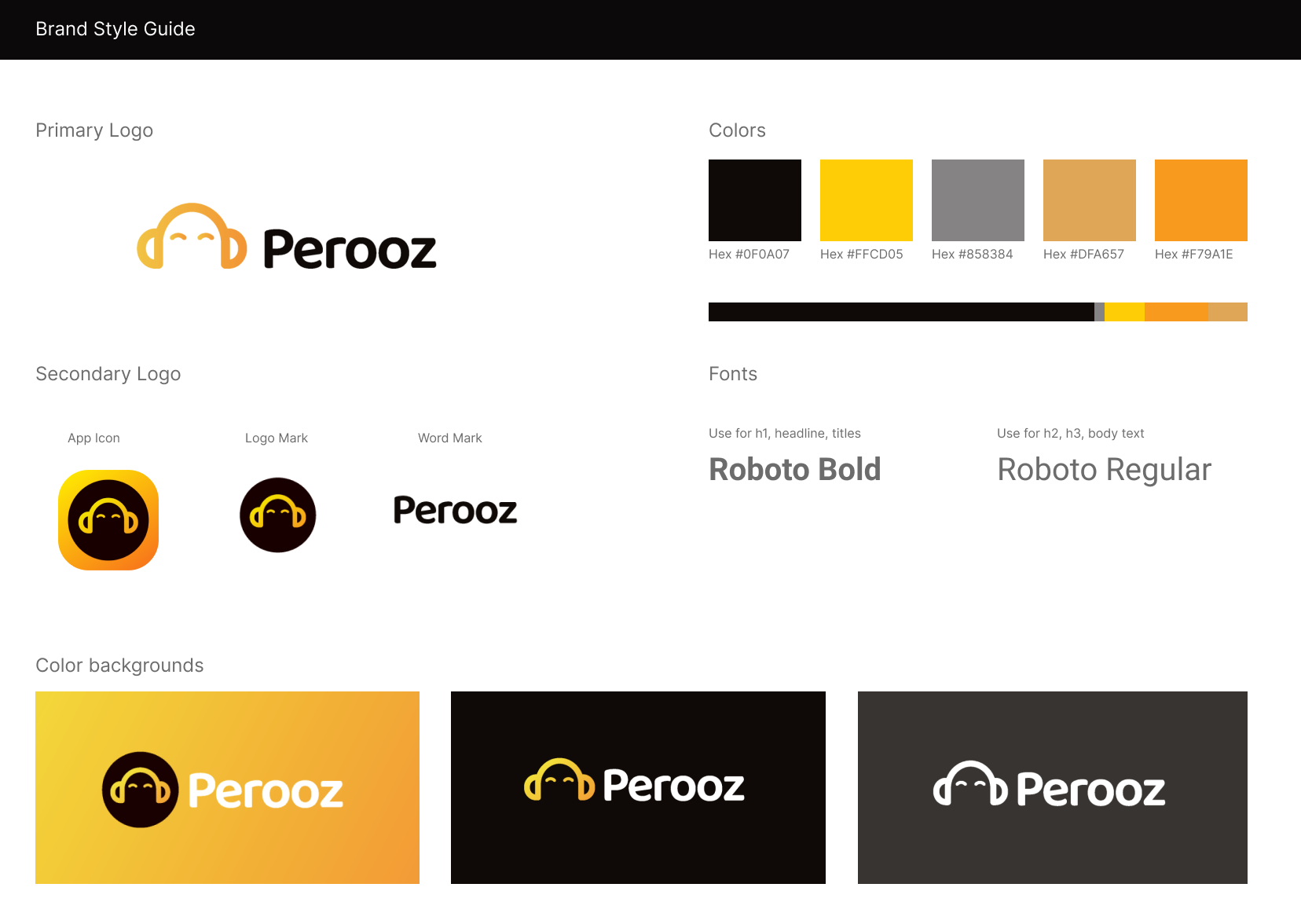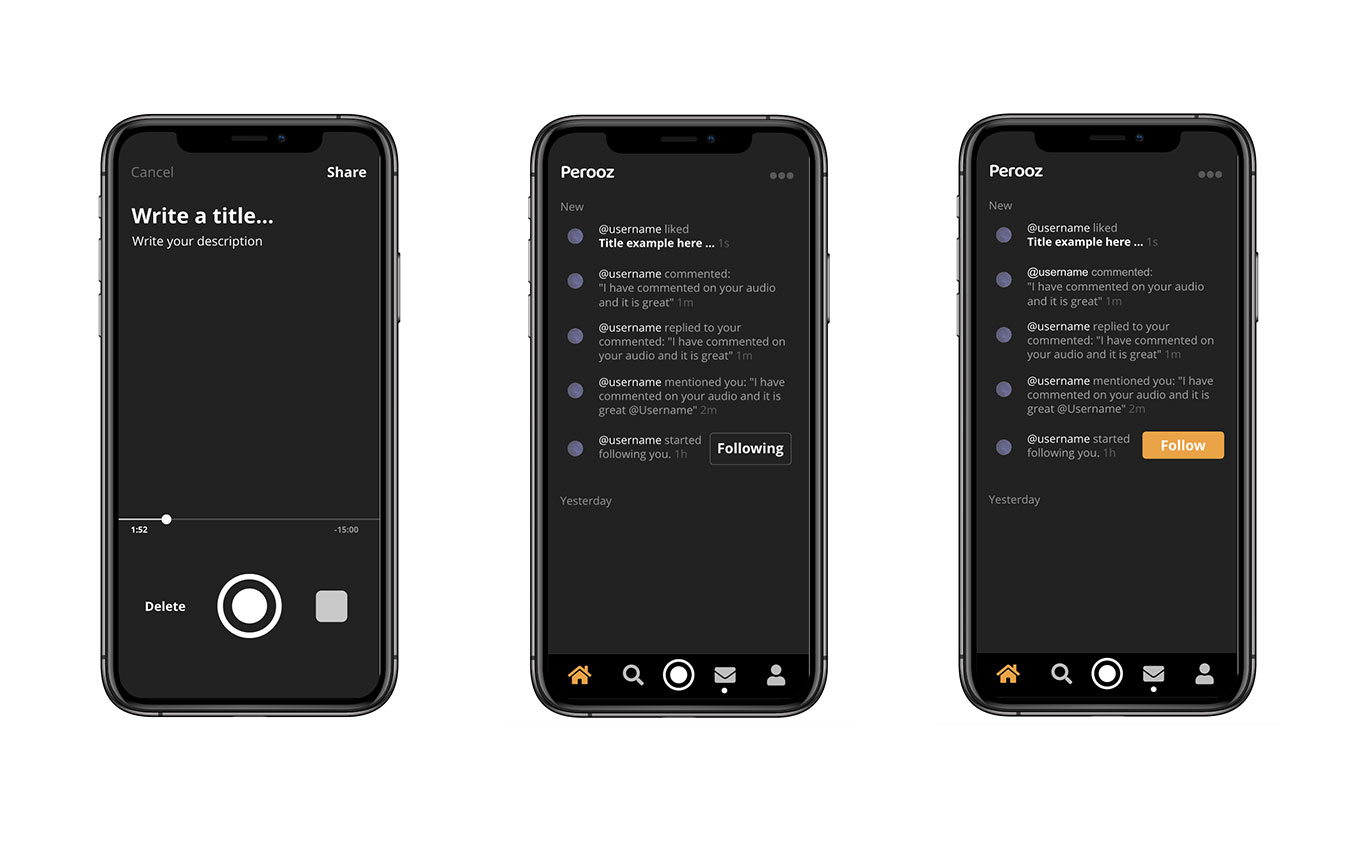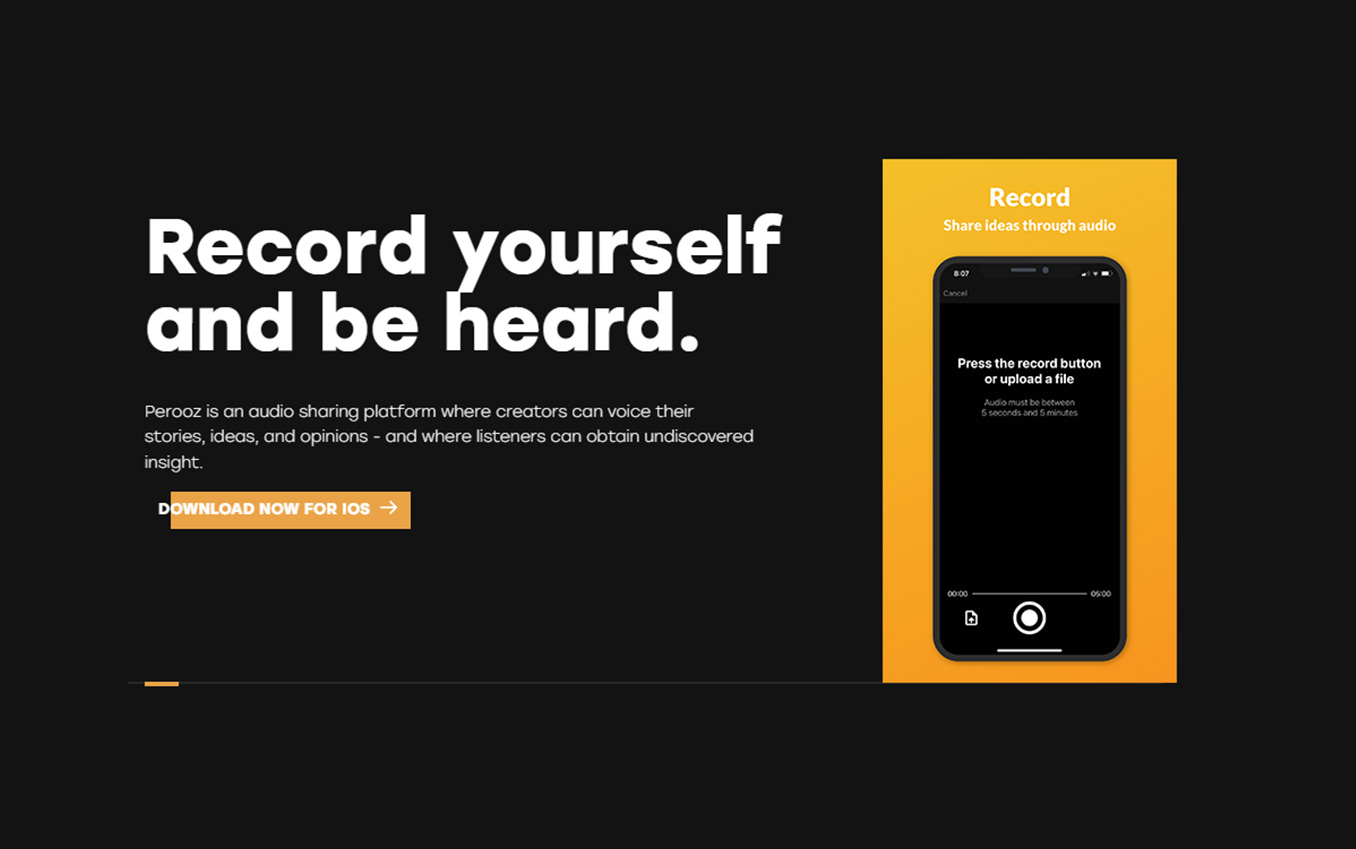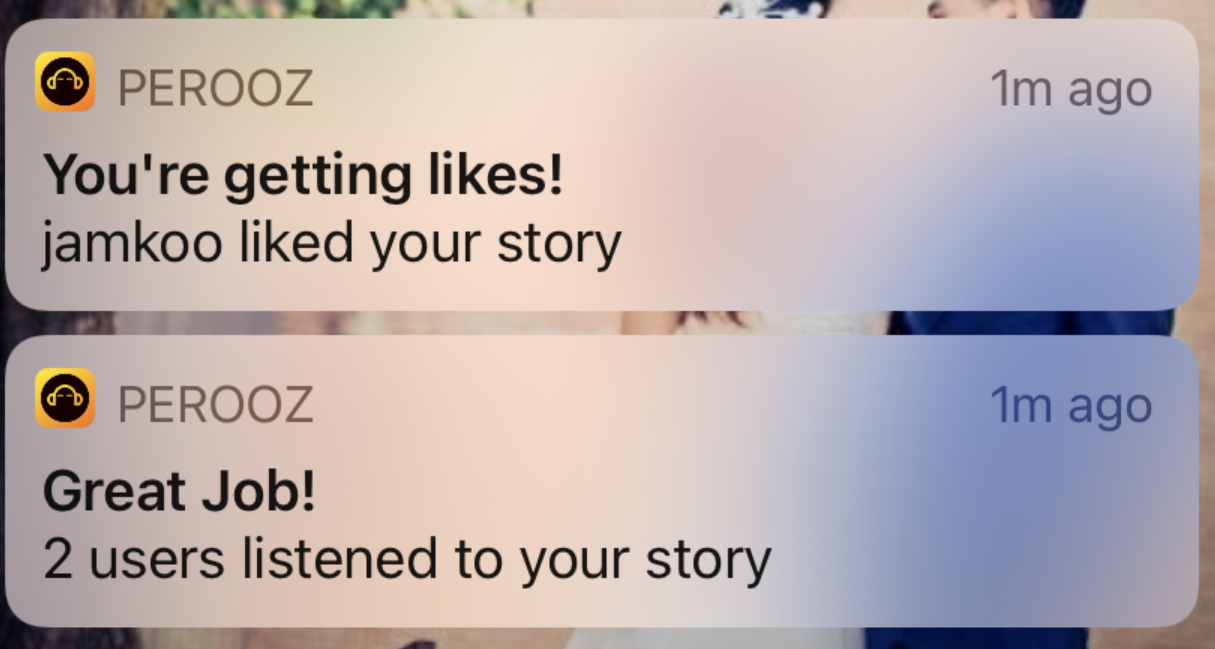Perooz App
A Seamless Audio Content Discovery Experience
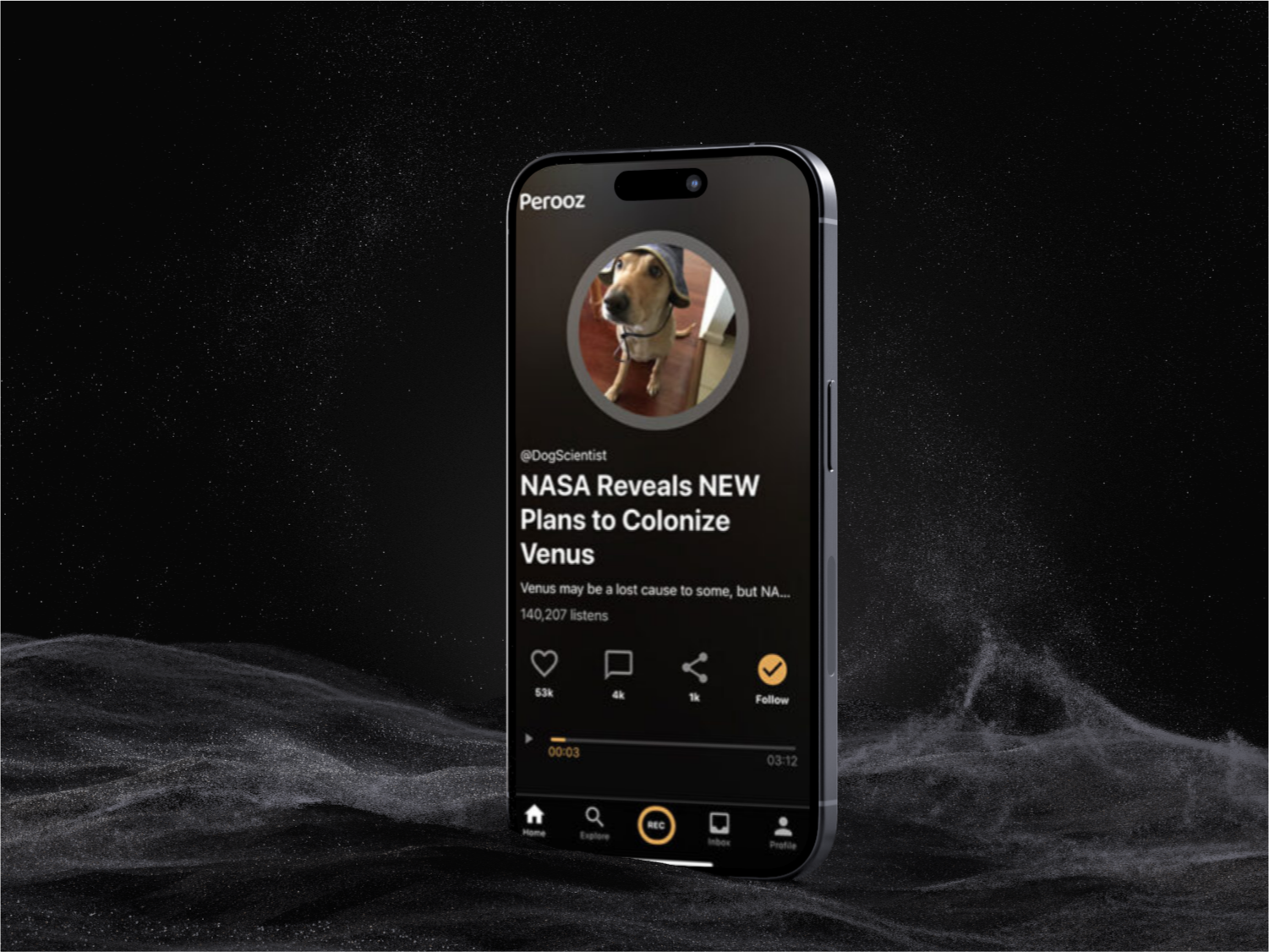
Role
Foundering Designer
Tools
Figma, HTML/CSS
Methods
The Challenge
Users struggled to efficiently share and discover audio content, leading to frustration and reduced engagement.
The Goal
To create an intuitive platform that simplifies audio content discovery and enhances usability across devices.
My Role and Responsibilities
As a Founding Designer, I spearheaded the entire UI/UX design process, collaborating with a developer and stakeholders to deliver a polished, user-friendly product.
Research
Conducted user surveys and interviews, uncovering key pain points like difficulty in organizing content and poor navigation flow.
Analyzed competitors to identify opportunities for improvement in content discovery.

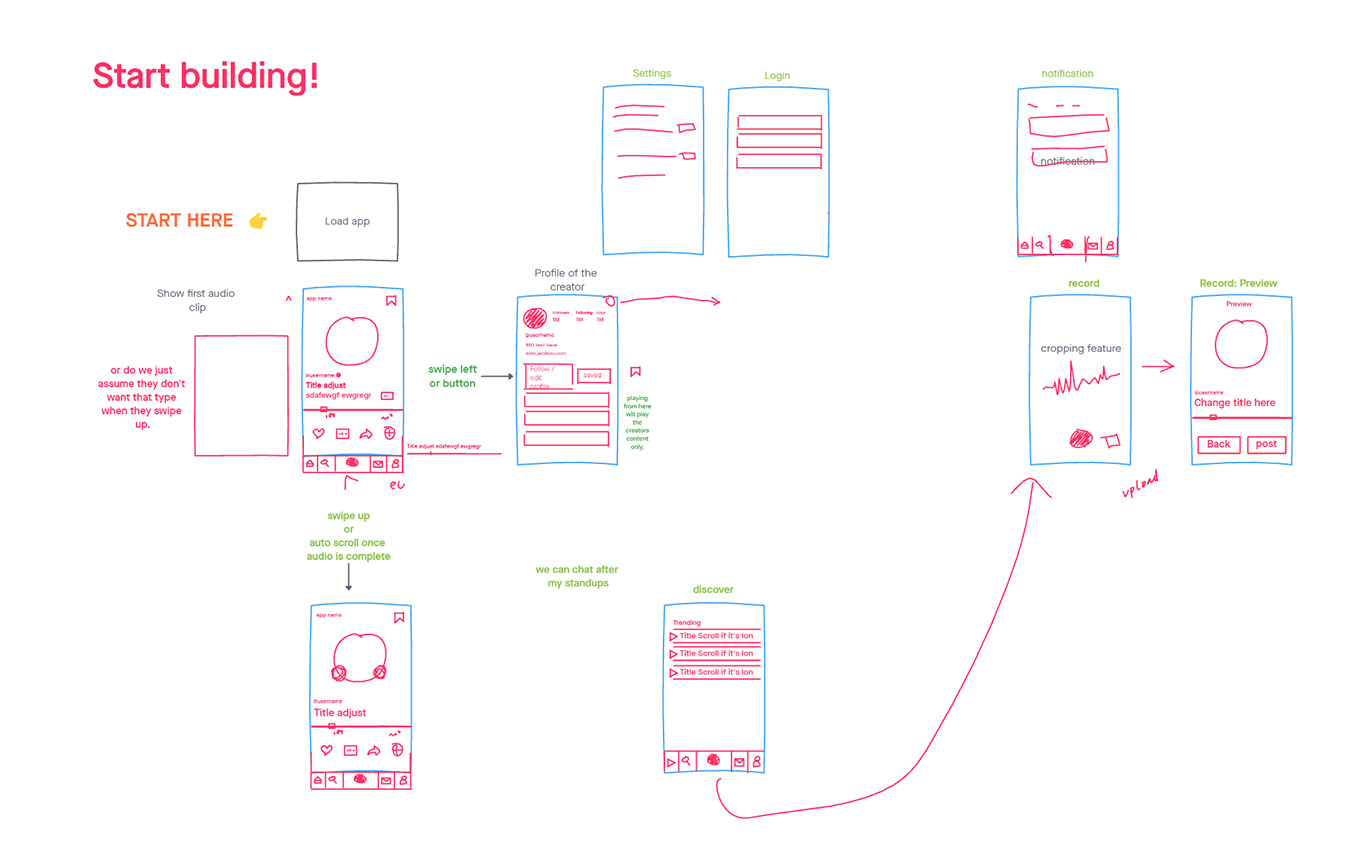
Ideation
Explored multiple layouts through low-fidelity wireframes. Developed navigation patterns focused on simplicity and quick access to core features.
Testing & Iteration
Conducted usability tests with target users, revealing navigation pain points.
Adjusted layouts to reduce task completion time by 30%.

